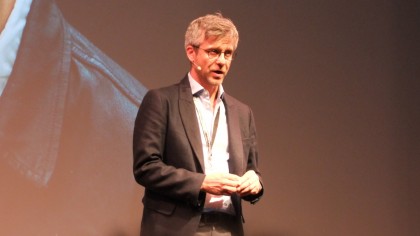HDR's TV potential will still be compromised for years to come
SDR is holding back the content creators.

Panasonic is rocking Frankfurt with its annual tech showcase and, unsurprisingly, all the TV talk is about HDR.
But despite new advances in TV tech, one of the biggest things holding back the adoption of both 4K and HDR is a real lack of dedicated content available.
On the 4K side it's all relatively straightforward; you shoot everything in ultra high definition and then for the folk still watching on their 1080p sets they can have it downsampled without losing anything but the extra sharpness of 4K.
High dynamic range content is different.
When something is created with HDR effects in mind you get a very different proposition when it's downscaled to SDR, losing the lighting, the shadowy details and the creative vision behind it. That is leading industry experts to believe that it will be years before we see the full power of HDR as a creative force in our TV shows.
Netflix is bringing HDR to our screens this year, and has been bullish about its appeal, and shooting the Netflix Original, Marco Polo, in HDR has enthused its Director of Photography, Vanja Cernjul, A.S.C. about the technology. But he readily admits he had to hold back and compromise his vision for the show because most people will only ever watch it in standard dynamic range.
"That was the main thing that was on my mind," Cernjul told techradar. "For the next year or so, only a limited amount of people will be viewing this in HDR, so we had to make sure that it looks good in SDR still. That was a balance we had to think about that maybe a couple of years we won't have to think about."
Get daily insight, inspiration and deals in your inbox
Sign up for breaking news, reviews, opinion, top tech deals, and more.

High dynamic demand
But with so many of this year's televisions coming out with HDR as a focus, such as Panasonic's new DX900 series, Sony's 2016 TVs and LG's full OLED range, there will be far more viewers out there desperate for some great HDR content to harness the power of their new panels.
And that's when we'll start to see the potential of HDR as a creative force come to the fore without the compromises needing to scale things back for SDR brings.
"Ultimately what's going to be interesting is once the film-makers start to create content specifically for HDR screens," said Cernjul.

But not only will we benefit from having TV shows created with HDR in mind from the get-go, Cernjul also believes that the new technology will entice even more Hollywood talent to the small screen as the place to really stretch their creative muscles.
We've already seen big name talent looking to TV as a place to tell more in-depth stories, especially with the likes of Netflix and Amazon less beholden to the budgetary constraints of network television. And having almost a new medium in HDR will only exacerbate the trend.
"It will attract even more talent from the people who traditionally work in theatrical release; they will be more interested in creating more content for TV," explains Cernjul. "The audience will benefit from even better creative power behind the programmes."